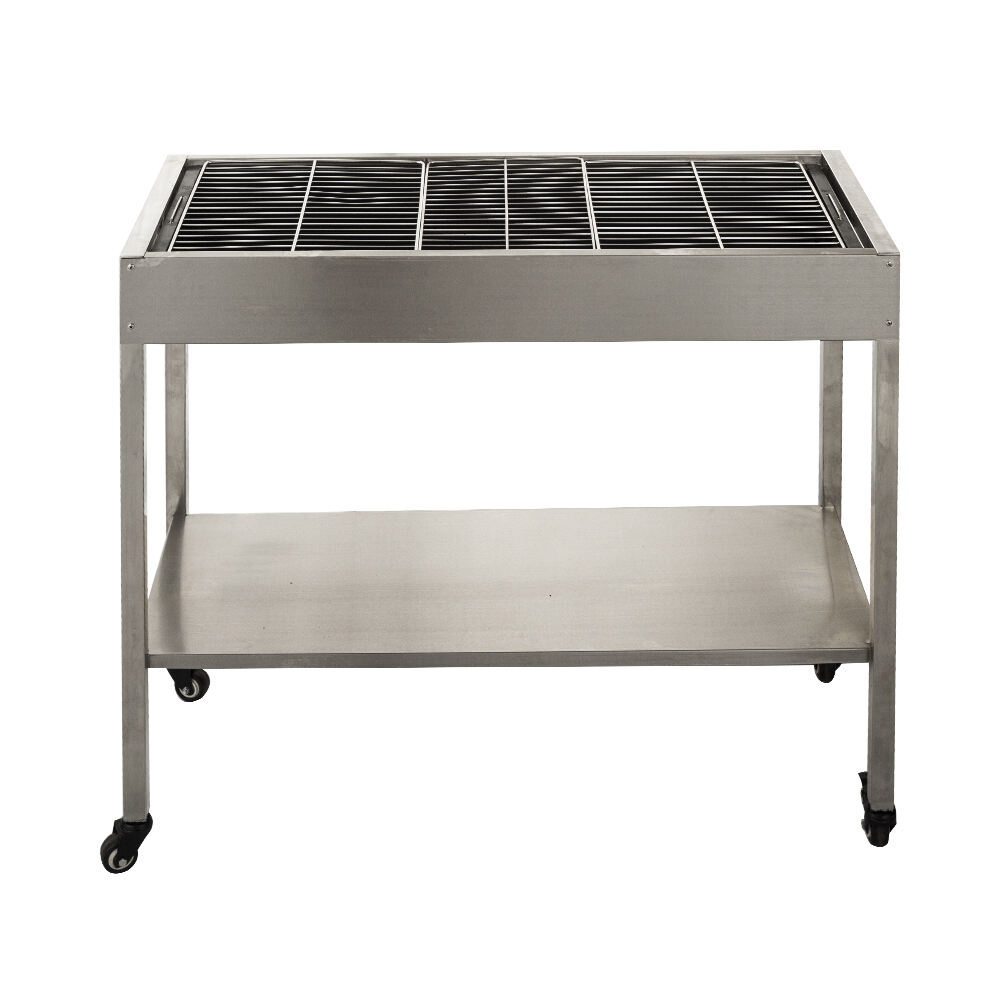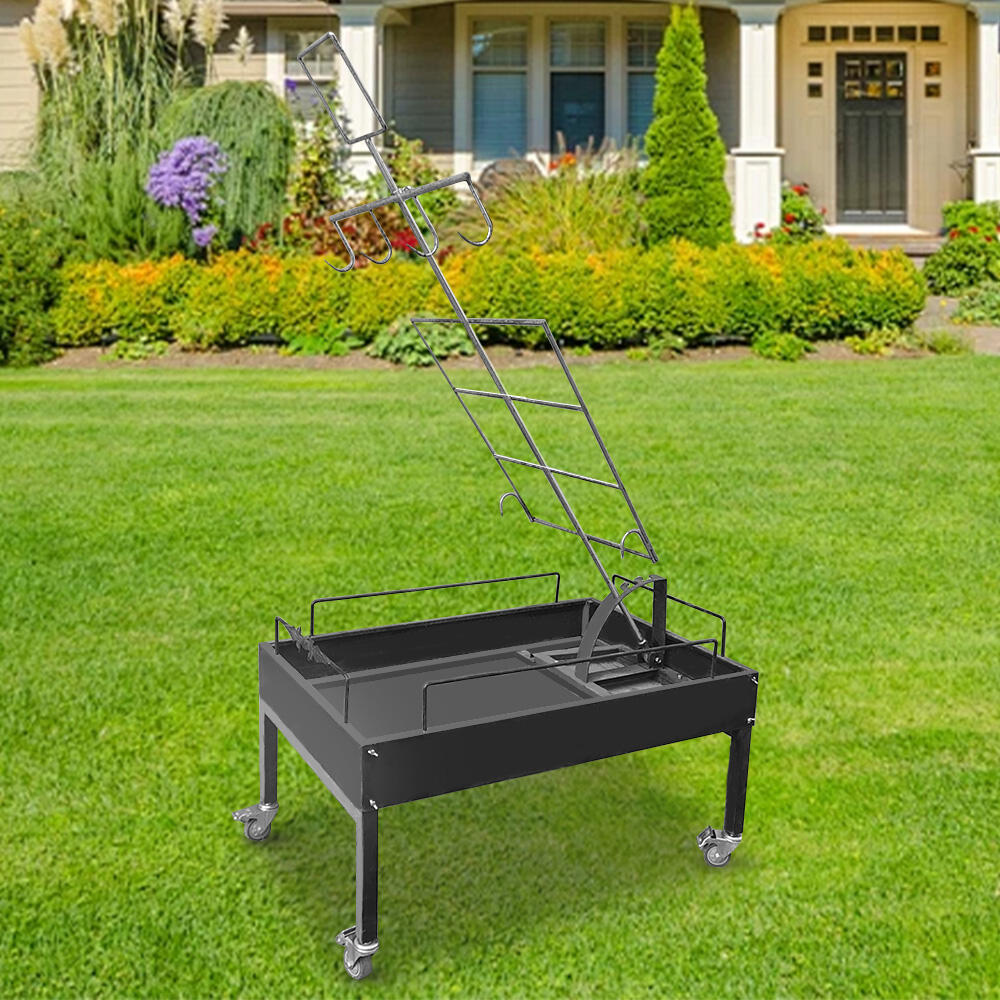Mastering the Art of Traditional Argentine Barbecue
The sizzling sounds of meat on hot metal, the intoxicating aroma of wood smoke, and the gathering of family and friends – these are the hallmarks of Argentine parrilla grilling. This time-honored cooking method has been perfected over generations, transforming simple cuts of meat into culinary masterpieces. The parrilla grill, with its distinctive V-shaped grates and adjustable height mechanisms, stands as the cornerstone of Argentine outdoor cooking culture.
At its heart, parrilla grilling is more than just a cooking method – it's a celebration of community, tradition, and the pure, unadulterated flavors that come from cooking over open flames. Unlike conventional gas or charcoal grills, a parrilla grill offers unparalleled control over heat distribution and allows for the authentic preparation of classic Argentine dishes.
Essential Components of an Authentic Parrilla Setup
The Grill Structure and Design
The foundation of any parrilla grill lies in its thoughtful construction. Made primarily from high-grade stainless steel or iron, these grills feature adjustable grates that can be raised or lowered to control cooking temperature. The V-shaped channels in the grates serve a crucial purpose – they catch and redirect dripping fat away from the fire, preventing flare-ups and ensuring even cooking.
Most traditional parrilla grills also include a firebox for burning wood or charcoal, creating that distinctive smoky flavor that Argentine barbecue is famous for. The ability to manage different heat zones across the cooking surface allows for simultaneous preparation of various cuts of meat, each requiring its own specific temperature.
Fuel and Fire Management
The choice of fuel plays a pivotal role in parrilla grilling. While charcoal provides consistent heat, many Argentine grill masters prefer to use a combination of hardwoods like quebracho or oak. These woods not only generate the necessary heat but also impart subtle smoky notes that enhance the meat's natural flavors.
Fire management on a parrilla grill requires skill and attention. The goal is to maintain a bed of red-hot embers rather than active flames. This steady heat source ensures even cooking and prevents the meat from charring too quickly on the outside while remaining raw inside.

Traditional Argentine Grilling Techniques
Meat Preparation and Seasoning
In Argentine cuisine, the preparation of meat for the parrilla grill is deliberately simple. Unlike other barbecue traditions that rely heavily on marinades and rubs, the Argentine approach emphasizes the natural flavors of the meat. A generous sprinkling of coarse salt is often the only seasoning used, applied just before cooking.
The key lies in selecting high-quality cuts of meat and bringing them to room temperature before grilling. This ensures even cooking and helps develop that coveted crust on the exterior while maintaining juiciness inside. Popular cuts include bife de chorizo (sirloin), vacío (flank steak), and the legendary asado de tira (short ribs).
Timing and Temperature Control
Mastering heat control on a parrilla grill takes practice and patience. The ability to adjust the height of the grates allows for precise temperature management. Starting with high heat to sear the meat, then raising the grates to finish cooking at a gentler temperature is a common technique used by experienced asadores (grill masters).
The timing varies depending on the cut and desired doneness, but the general rule is to turn the meat only once during cooking. This patient approach allows for proper caramelization and ensures that the meat retains its juices.
Beyond Beef: Exploring Diverse Parrilla Offerings
Seafood and Poultry Options
While beef may be the star of Argentine parrilla, the versatility of these grills extends to other proteins. Fresh fish, wrapped in foil with herbs and lemon, takes on a delicate smoky flavor when cooked over the embers. Chicken, particularly spatchcocked and seasoned with chimichurri, becomes incredibly juicy with crispy skin when prepared on the parrilla grill.
Shellfish, such as prawns and scallops, can be quickly seared on high heat, while whole fish benefit from the adjustable grates that allow for gentle, even cooking. The key is to maintain appropriate temperatures and use the grill's features to prevent delicate proteins from overcooking.
Vegetable Preparations
Vegetables acquire remarkable flavor when cooked on a parrilla grill. Bell peppers, eggplants, and zucchini can be grilled directly on the grates, while more delicate items like tomatoes and corn benefit from placement in specialized grilling baskets. The smoke and heat transform simple vegetables into complex, flavorful side dishes that complement the grilled meats perfectly.
Many vegetables can be pre-seasoned with olive oil and herbs, then grilled until they develop appealing char marks while maintaining their natural sweetness. The variable heat zones of a parrilla grill allow for simultaneous cooking of different vegetables, each at their optimal temperature.
Maintaining and Caring for Your Parrilla Grill
Cleaning and Storage Practices
Proper maintenance of a parrilla grill ensures its longevity and optimal performance. After each use, allow the grill to cool completely before cleaning the grates with a wire brush to remove food particles. The V-shaped channels should be cleared of any accumulated grease or debris to prevent flare-ups during subsequent use.
Regular inspection of the grill's moving parts, particularly the height adjustment mechanism, helps prevent mechanical issues. When not in use, covering the grill protects it from the elements, though many traditional parrilla grills are built to withstand outdoor conditions.
Seasonal Maintenance Tips
Different seasons require different maintenance approaches for your parrilla grill. In winter, ensure the grill is protected from excessive moisture to prevent rust formation. Spring cleaning should include a thorough inspection of all components and possibly a light oiling of metal parts to prevent corrosion.
The firebox may need periodic cleaning to remove ash buildup, and the chimney, if present, should be checked for any blockages. Taking these preventive measures extends the life of your parrilla grill and ensures consistent cooking performance year after year.
Frequently Asked Questions
What makes a parrilla grill different from standard barbecue grills?
A parrilla grill distinguishes itself through its V-shaped grates, adjustable height mechanism, and focus on ember-based cooking rather than direct flames. These features allow for better temperature control and fat management, resulting in more evenly cooked meat with authentic Argentine flavor.
How long does it take to master parrilla grilling techniques?
While basic proficiency can be achieved within a few months of regular practice, truly mastering parrilla grilling typically takes years of experience. The key is understanding fire management, heat zones, and how different cuts of meat respond to various cooking temperatures.
What type of wood is best for parrilla grilling?
Hardwoods like quebracho, oak, or maple are ideal for parrilla grilling as they produce long-lasting embers and clean smoke. These woods contribute to the authentic flavor without overwhelming the natural taste of the meat.

